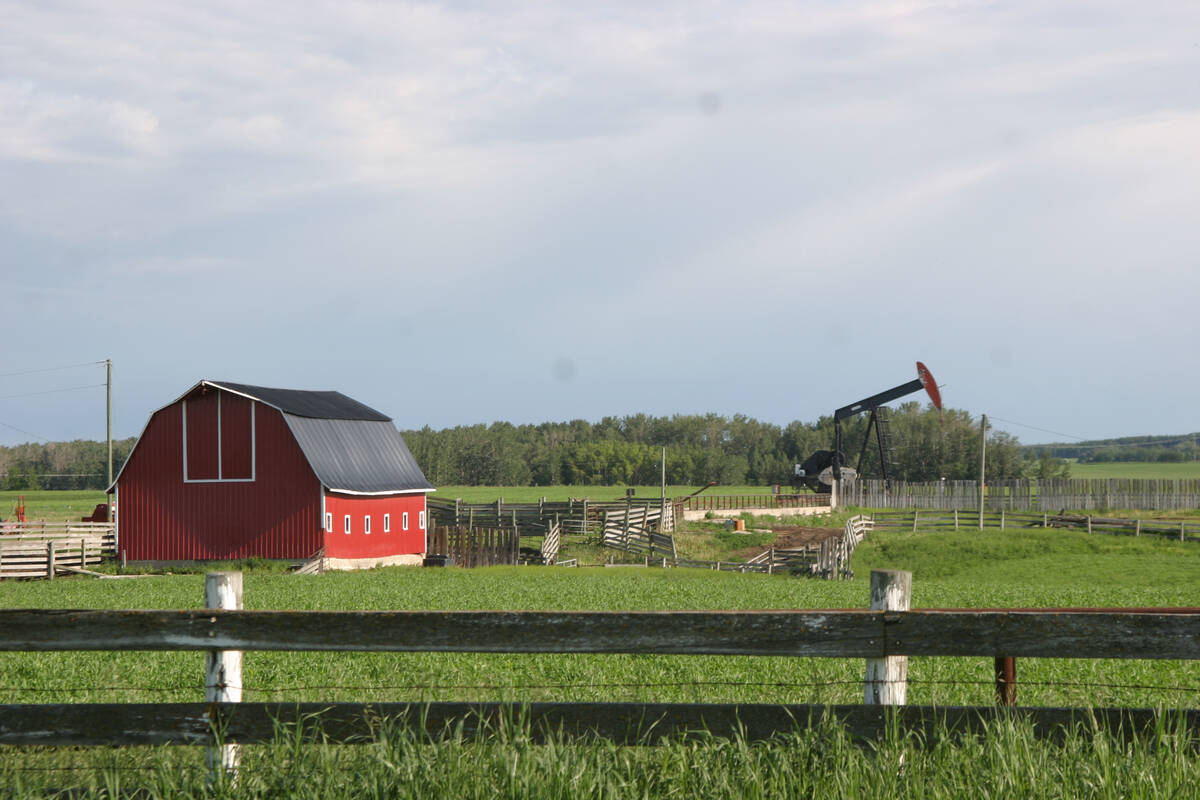Glacier FarmMedia – Canadian food price inflation has many causes, but grocers gouging customers isn’t one of them, Michael von Massow of the University of Guelph said during the December Fields on Wheels conference hosted by the University of Manitoba.
Even the carbon tax hasn’t had much impact, according to the associate professor of food economics.
“I would argue that inflation … and food inflation is very poorly understood,” he said.
Read Also

Recommendations in the mature assets strategy could cause potential problems for landholders
The Western Stock Growers’ Association urges producers to pay attention to the potential changes to Alberta’s Mature Assets Strategy.
The web-based event tackled factors affecting the agri-food supply chain, ranging from geopolitical stresses to weather, transportation logistics, government policies such as carbon pricing and the increasing push for sustainability.
Inflation
While food prices on average in November 2023 were up 5.4 per cent year over year, they declined month to month in four of the last five months, von Massow noted.
“They just haven’t gone down to levels below what they were a year ago. So, I think it’s important to remember that context … and understand that not everything is going up universally.”
For example, pork prices are up less than the 5.4 per cent average.
“Ham and bacon are actually down 7.5 per cent [year over year],” von Massow said. “There are some things that are up much more than that. There are some things that are actually down, and I think that that’s some important context as we talk about some of the drivers of inflation.”
Canadian food prices are typically higher in winter as more fresh fruit and vegetables are imported, he said.
That also exposes those food categories to the whims of the exchange rate, and the wide gap in value between the Canadian and U.S. dollar adds to Canadian food costs.
Consumers and government are anxious for easy solutions, von Massow said, and they want a scapegoat.
“I would argue that there isn’t a silver bullet, that most of these issues are beyond the control of governments, of grocers and of others to make a difference.”
The war in Ukraine and weather are major drivers of food prices, the academic told listeners. Both have affected world food supplies and supply chains.
The war saw Ukrainian exports of wheat and sunflowers fall, leading to higher prices for flour, pasta and baked goods. As food supplies tightened, other exporters, such as India, Malaysia and Argentina, cut back to assure local supplies.
Extreme weather added to the disruption.
“We can look back a couple of years to the flooding in British Columbia, but we’re also seeing it more directly impacting production of food, which reduces supply and drives costs up,” von Massow said, also pointing to instances of flooding and disease issues in California.
“We know it’s been dry in parts of Western Canada. We’re seeing some liquidation in cattle herds, which will probably drive some price increases into the future.
“India banned export of non-basmati rice recently, again in response to weather pressure on rice supplies. So, it’s happening everywhere and it’s happening with greater frequency.”
Competition
While Canada’s grocery sector would benefit from more competition, von Massow said “they are not necessarily contributing significantly to food price inflation.”
Historically, income as a percentage of total revenue for Canada’s top three grocers goes up and down, he said. Loblaws’ ratio is up one per cent.
“I would argue that that’s largely because of pressure back on their suppliers, and we heard [Loblaws’ chair] Galen Weston say that,” von Massow said.
“Their increase in profit percentage is largely at the expense of their suppliers, which is not a good thing, which is a demonstration of market power, but doesn’t necessarily reflect in higher grocery prices.”
Metro, another large Canadian food retailer, saw a bigger increase in income over revenue, but likely because of higher earnings from its pharmacies, he said.
“So, while these [income over revenue] percentages are a little higher in Canada, which may suggest that there’s some room for improved competition, it doesn’t look like grocers have driven food price inflation.”
He further argued that grocers stand to profit more as inflation cools, as “they adapt more slowly than they did when prices go up.”
Carbon price
Canada’s levy on carbon emissions isn’t weighing overly heavy on food prices, adding an estimated 0.1 to 0.2 per cent, he said.
As the carbon price rises, so will food prices, he warned, “but in the context of sort of this generational food price inflation, it’s been relatively modest.
“I think the other thing to remember is that the majority of Canadian households are actually getting more money back from the carbon tax than they’re paying in. So, it’s worth looking at whether that net increase is covering sort of the cost increases they’re seeing.”
It isn’t just the Bank of Canada that says the carbon price has had a small impact on food prices, von Massow said. A number of organizations and individuals have echoed the argument, including University of Calgary economics professor Trevor Tombe.
Looking hungry
Higher food prices have increased food insecurity in Canada, von Massow said, and some people have changed the way they shop.
“People at the bottom end of the income scale are just buying fewer calories and having to go elsewhere. But we see … what I call trading down – buying cheaper cuts, maybe doing one meal a week without an animal protein.”
Big grocery chains say their discount stores are doing more business, which could increase their profits. While prices at those locations may be cheaper, margins may be higher.
But some consumers are creatures of habit and buy many of the same items every week.
Shoppers could reduce their bills by buying in-season and storable Canadian products, he suggested.
“If we adapt our purchases, which some people are doing … people are able to sort of buffer themselves at least a little bit.”
Supply chain resiliency helps keep food prices down, von Massow said. That means having supply chains that can quickly get back to normal after a setback.
After COVID-19, many believed localizing supplies would lead to less disruptions, but von Massow said that might not be the right approach.
“We have to look at what the relative risks are. What are the costs of those risks? And then balance our response, because increasing localization might help protect us from supply chain disruptions, but it may make us more susceptible, frankly, to climate change risk and production disruptions.”
Canadian cattle producers suffered during COVID-19 as packing plant workers fell ill and capacity suffered. Perhaps Canada needs more packing plants, von Massow said, but the existing ones are smaller than in the United States, an allusion to Canadian plants’ competitiveness. Smaller Canadian plants have been built and disappeared, he noted.
“So, we have to, again, balance resilience with cost. What is the actual risk, and how can we adapt to it?”















